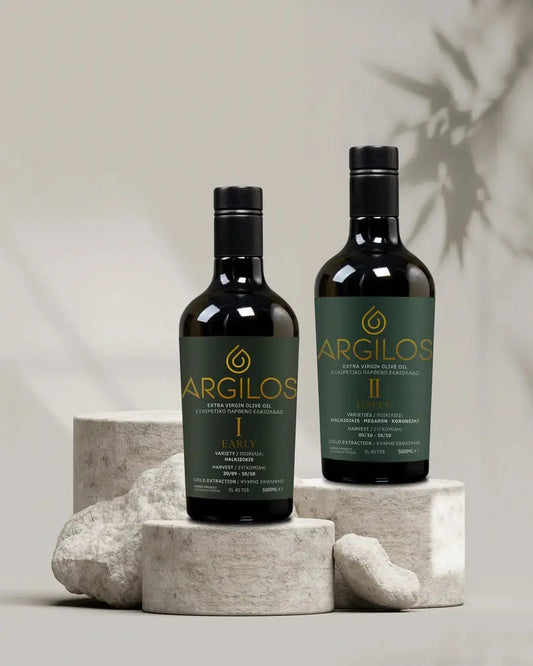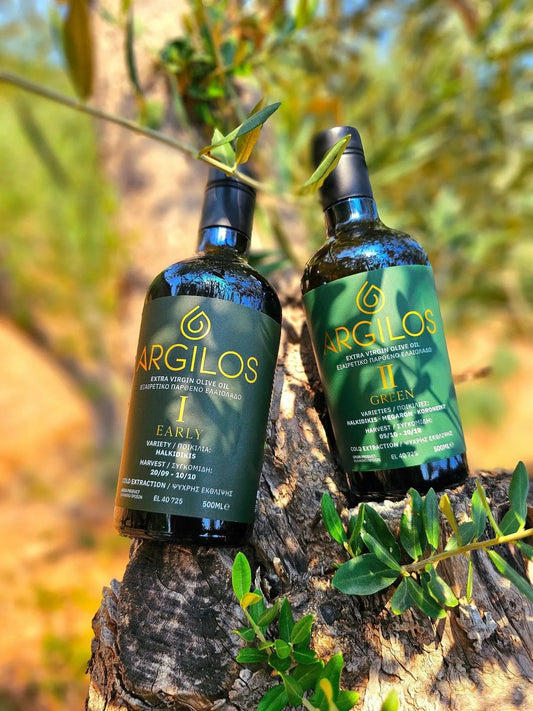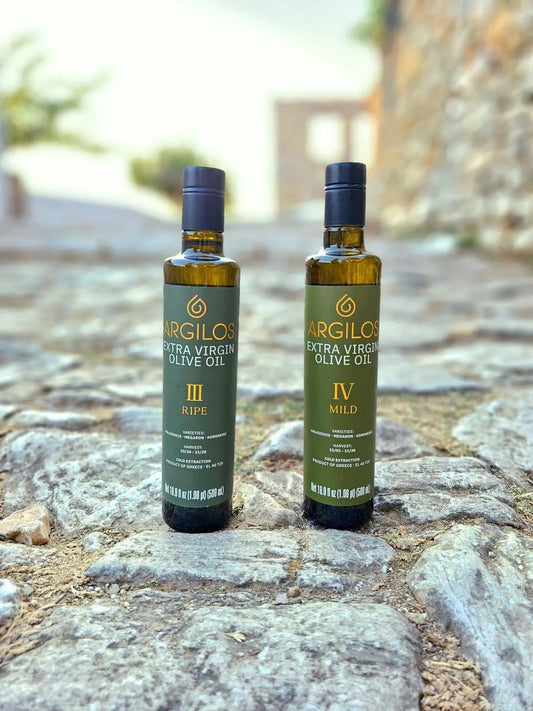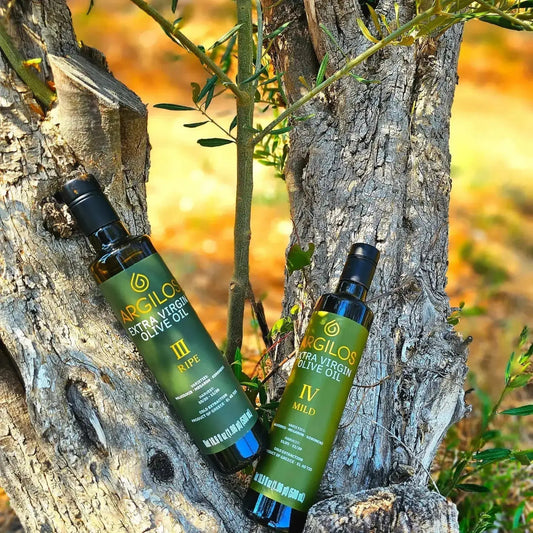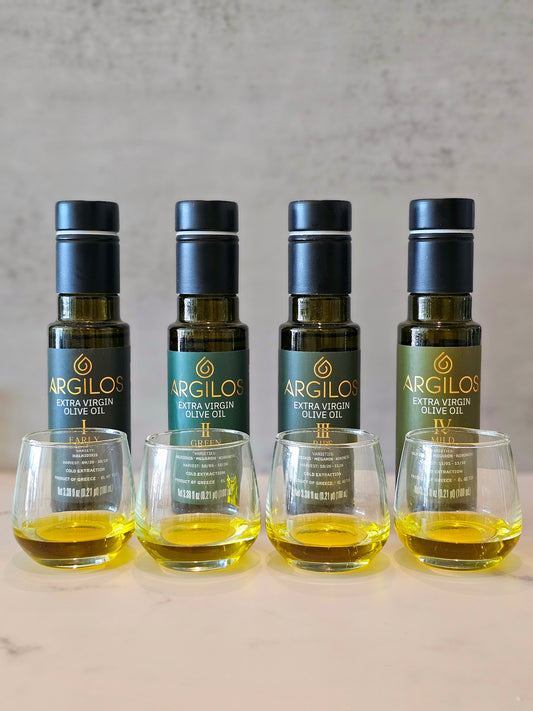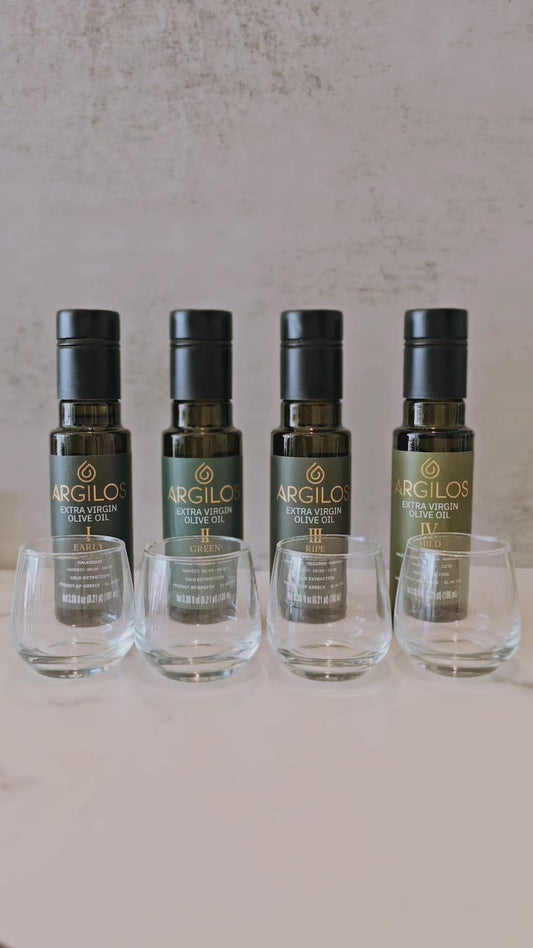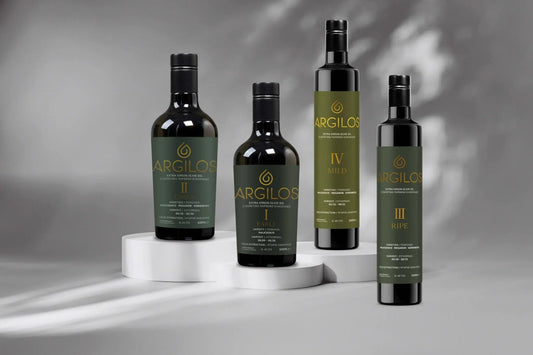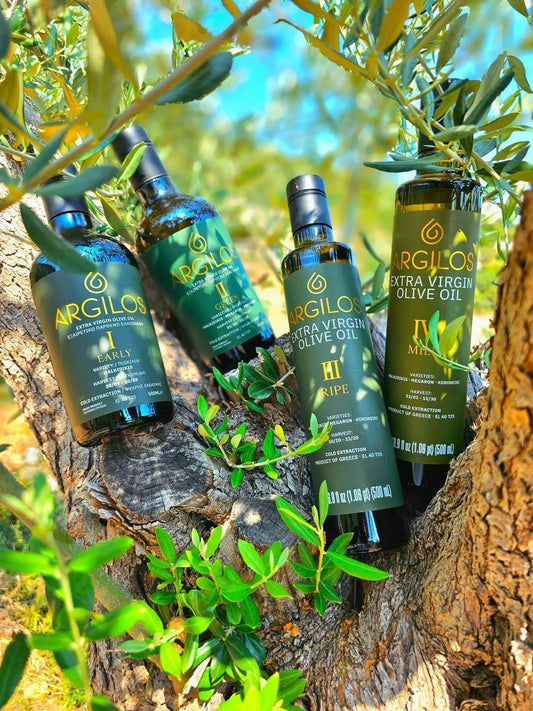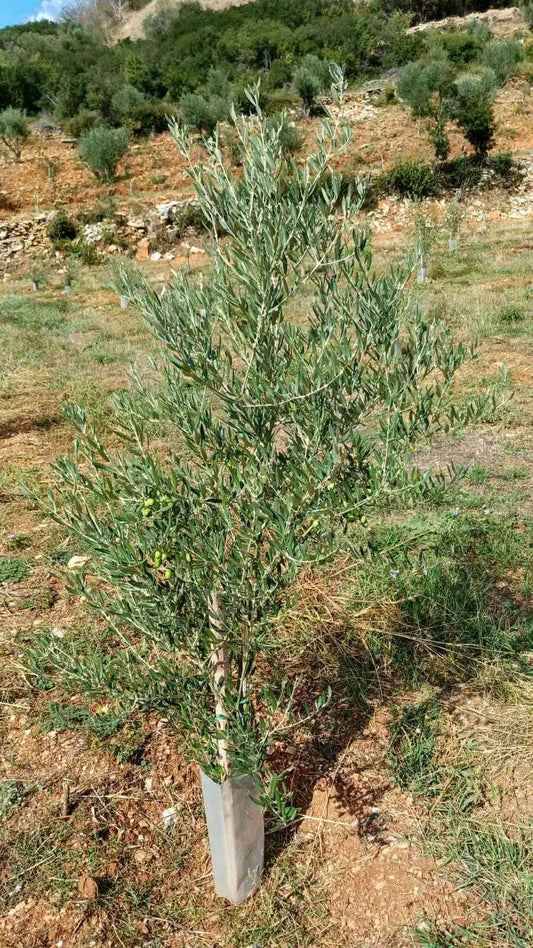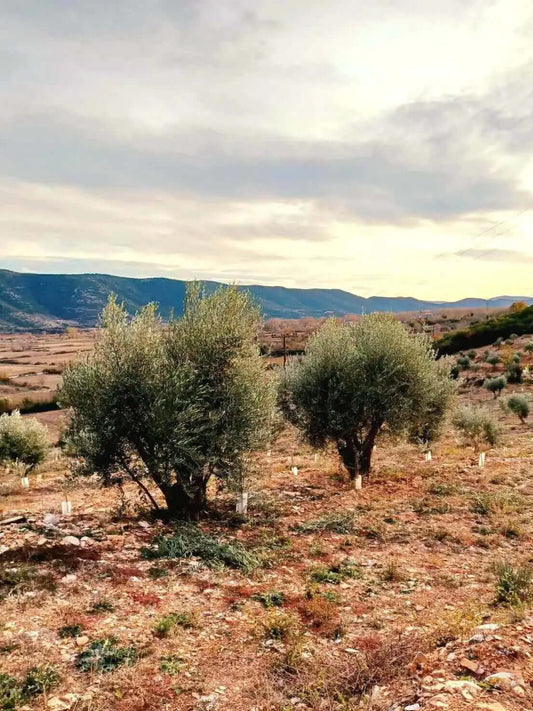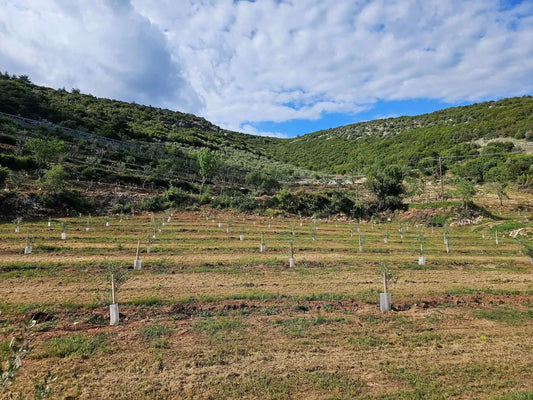Does Olive Oil Help You Tan? The Science Behind This Popular Tanning Method
Share
Key Takeaway: While olive oil can provide minimal sun protection and may enhance tanning by attracting more UV rays to the skin, it offers significantly less protection than proper sunscreen and can increase the risk of sunburn. Understanding the science behind olive oil's effects on tanning helps you make informed decisions about safe sun exposure practices.
Understanding How Olive Oil Affects Your Skin in the Sun
The question "does olive oil help you tan" has circulated among sun enthusiasts for decades, often passed down through generations of beach-goers. To understand this phenomenon, we need to examine what happens when olive oil meets sun exposure on your skin.
Olive oil contains natural compounds that interact with ultraviolet radiation in specific ways. The oil has a Sun Protection Factor (SPF) of approximately 7-8, which means it provides minimal protection against harmful UV rays. However, this low SPF level allows most UV radiation to penetrate the skin while potentially intensifying the tanning process through light refraction.
When applied to skin, olive oil creates a film that can attract and concentrate sunlight. This concentrated exposure may lead to faster pigmentation, but it also significantly increases the risk of skin damage. The oil's molecular structure allows it to penetrate the upper layers of skin, potentially carrying UV radiation deeper than it would normally reach.
Extra virgin olive oil, particularly high-quality varieties like those from Argilos olive groves, contains antioxidants such as vitamin E and polyphenols. These compounds may provide some protection against free radical damage caused by UV exposure, but they cannot replace proper sun protection measures.

Does Olive Oil Help You Tan Faster?
The short answer to "does olive oil help you tan faster" is yes, but with significant caveats that every sun-conscious person should understand. Olive oil can accelerate the tanning process through several mechanisms, though this acceleration comes with increased health risks.
Olive oil acts as a magnifying agent for UV rays. When you apply oil to your skin, it creates a glossy surface that can intensify UV exposure by up to 25%. This intensification occurs because the oil refracts and concentrates sunlight onto the skin's surface, similar to how a magnifying glass focuses light.
The oil's ability to penetrate skin layers also plays a role in faster tanning. Unlike water-based products that sit on the skin's surface, olive oil can carry UV radiation into deeper skin layers where melanin production occurs. This deeper penetration can stimulate melanocytes (pigment-producing cells) more effectively than unprotected sun exposure alone.
However, dermatologists consistently warn that faster tanning typically means increased skin damage. The same properties that make olive oil effective for accelerating tan development also make it dangerous for long-term skin health. Studies show that using oils for tanning can increase the risk of premature aging, dark spots, and skin cancer.
Professional tanning experts emphasize that any method promising faster tanning results usually involves compromising skin safety. The ideal tanning approach prioritizes gradual exposure with proper protection over rapid results with potential consequences.
The Science Behind Olive Oil's Sun Protection Properties
While olive oil does offer some natural sun protection, understanding its limitations is crucial for safe sun exposure. Research indicates that various plant oils, including olive oil, contain compounds that can absorb certain UV wavelengths, but their protective capabilities pale in comparison to commercial sunscreens.
Olive oil's natural SPF of 7-8 means it blocks only about 12-15% of UV radiation. In contrast, SPF 30 sunscreen blocks approximately 97% of harmful rays. This dramatic difference highlights why dermatologists never recommend olive oil as a primary sun protection method.
The antioxidant properties of high-quality olive oil, such as Argilos extra virgin varieties, may provide some cellular protection against oxidative stress caused by UV exposure. Vitamin E, abundant in premium olive oils, can help neutralize free radicals generated by sun exposure. However, these antioxidant benefits work better as post-sun exposure treatment rather than prevention.
Mediterranean populations have historically used olive oil for various skin applications, including sun-related treatments. However, traditional use often involved applying oil after sun exposure to moisturize and heal skin, rather than as a tanning accelerator. This distinction is important because it reflects a focus on skin recovery rather than increased UV absorption.
Modern research suggests that while olive oil has beneficial properties for skin health, its use during sun exposure should be approached with extreme caution. The oil's moisturizing and antioxidant benefits can be obtained through safer applications that don't involve direct sun exposure.
Comparing Olive Oil to Proper Sun Protection Methods
When evaluating olive oil against established sun protection methods, the differences become starkly apparent. Professional sunscreens undergo rigorous testing to ensure consistent, reliable protection levels, while natural oils provide variable and generally insufficient protection.
Broad-spectrum sunscreens protect against both UVA and UVB radiation through chemical or physical blocking mechanisms. UVA rays penetrate deep into skin and cause long-term damage, while UVB rays primarily affect the skin's surface and cause immediate burning. Olive oil provides minimal protection against either type of radiation.
The application and reapplication requirements also differ significantly. Sunscreen maintains its protective properties for specified time periods and can be reapplied to maintain protection levels. Olive oil, however, may actually increase vulnerability to UV damage over time as it heats up and potentially breaks down under intense sun exposure.
Water resistance represents another crucial difference. Many sunscreens maintain their protective properties even when you swim or sweat, while olive oil easily washes off or disperses, leaving skin completely vulnerable to UV damage.
Cost-effectiveness also favors proper sunscreen use. While premium olive oil might seem expensive, the medical costs associated with treating sun damage, premature aging, or skin cancer far exceed the price of quality sun protection products.
Safe Practices for Using Olive Oil in Sun-Related Skincare
If you choose to incorporate olive oil into your sun-related skincare routine, following specific safety protocols becomes essential. These practices can help you enjoy olive oil's benefits while minimizing potential harm from UV exposure.
The safest approach involves using olive oil before and after sun exposure, rather than during active tanning sessions. Apply a small amount of high-quality olive oil to clean skin 30 minutes before sun exposure to create a protective barrier, but always follow with broad-spectrum sunscreen.
Timing plays a crucial role in safe olive oil use for tanning. Limit sun exposure to early morning (before 10 AM) or late afternoon (after 4 PM) when UV intensity is naturally lower. During these periods, olive oil's minimal SPF might provide adequate protection for very brief exposures.
Post-sun olive oil application offers the most benefits with the least risk. After showering to remove salt, chlorine, or sunscreen residue, apply a thin layer of olive oil to slightly damp skin. This technique helps lock in moisture and may aid in skin recovery from UV exposure.
Quality matters significantly when selecting olive oil for skincare applications. Extra virgin olive oils with high antioxidant content, such as those from traditional Mediterranean producers, provide superior skin benefits compared to refined or lower-grade oils.
Always perform a patch test before applying olive oil to large skin areas. Some individuals may experience sensitivity or allergic reactions, particularly when combining oil application with sun exposure.
Alternative Benefits of Olive Oil for Skin Health
Beyond its controversial role in tanning, olive oil offers numerous proven benefits for skin health that don't require sun exposure. Understanding these applications helps you maximize olive oil's skincare potential while maintaining safety.
Olive oil excels as a natural moisturizer, particularly for dry or mature skin. Its molecular structure allows deep penetration into skin layers, providing lasting hydration without clogging pores. This moisturizing effect can help maintain skin suppleness and reduce the appearance of fine lines.
The anti-inflammatory properties of olive oil, particularly varieties rich in oleocanthal (found in early harvest oils), may help calm irritated or sun-damaged skin. These compounds can reduce redness and support the skin's natural healing processes.
As a makeup remover, olive oil effectively dissolves even waterproof cosmetics while nourishing the delicate skin around the eyes. This gentle removal method prevents the tugging and irritation associated with harsh makeup removers.
Olive oil can serve as a carrier oil for essential oils or other beneficial skincare ingredients. Its stable nature and skin compatibility make it an excellent base for creating personalized skincare treatments.
For hair care, olive oil provides deep conditioning benefits, particularly for hair damaged by sun exposure, chlorine, or salt water. Apply oil to dry hair, leave for 30 minutes, then shampoo for restored shine and manageability.
Understanding the Risks and Long-Term Consequences
While exploring olive oil's tanning effects, understanding the potential risks becomes paramount for making informed decisions about your skin health. These risks extend far beyond immediate sunburn and can impact your appearance and health for decades.
Accelerated aging represents one of the most visible long-term consequences of using olive oil for tanning. The increased UV penetration facilitated by oil application can break down collagen and elastin fibers more rapidly, leading to premature wrinkles, sagging, and age spots.
Hyperpigmentation often results from intense UV exposure combined with oil application. While you might achieve a darker tan initially, uneven pigmentation, dark spots, and melasma can develop over time, requiring expensive treatments to address.
The skin cancer risk increases significantly when using methods that intensify UV exposure. Melanoma, the deadliest form of skin cancer, has been linked to intense, intermittent UV exposure – exactly the type that occurs when using oils to accelerate tanning.
Photo-sensitivity reactions may develop in some individuals who combine olive oil application with sun exposure. These reactions can cause severe burning, blistering, or permanent skin discoloration, particularly in people taking certain medications or with specific skin conditions.
Dehydration becomes more likely when using oil-based tanning methods. The oil can create a false sense of skin protection, leading people to stay in the sun longer than safe, resulting in severe dehydration and heat-related illnesses.
Professional Recommendations for Safe Sun Exposure
Dermatologists and skin care professionals consistently recommend specific protocols for safe sun exposure that can help you achieve a healthy glow without compromising long-term skin health.
The foundation of safe sun exposure involves proper sunscreen application. Choose broad-spectrum SPF 30 or higher, apply generously (about one ounce for the entire body), and reapply every two hours or after swimming or sweating.
Gradual exposure builds a sustainable tan while allowing your skin to develop natural protection. Start with 15-20 minutes of sun exposure and gradually increase by 5-10 minutes every few days, always with proper protection.
Timing matters significantly for safe tanning. Avoid sun exposure during peak UV hours (10 AM to 4 PM) when radiation intensity reaches dangerous levels. Early morning and late afternoon sun provides gentler exposure that's less likely to cause damage.
Protective clothing, wide-brimmed hats, and UV-blocking sunglasses should complement, not replace, sunscreen use. These physical barriers provide additional protection for sensitive areas like the face, neck, and shoulders.
Hydration plays a crucial role in healthy skin during sun exposure. Drink plenty of water before, during, and after sun exposure to maintain skin health and support your body's natural cooling mechanisms.
Conclusion
The question "does olive oil help you tan" has a complex answer rooted in both science and safety considerations. While olive oil can intensify tanning by concentrating UV rays and allowing deeper penetration, this acceleration comes with significant health risks that far outweigh the cosmetic benefits.
The evidence clearly shows that olive oil's minimal SPF of 7-8 provides inadequate protection against harmful UV radiation while potentially increasing skin damage through intensified exposure. Professional dermatologists universally recommend proper sunscreen over oil-based tanning methods for maintaining long-term skin health.
For those who appreciate olive oil's skincare benefits, the safest approach involves using premium extra virgin varieties as post-sun moisturizers rather than tanning accelerators. This application method allows you to enjoy olive oil's antioxidant and moisturizing properties without exposing yourself to unnecessary UV damage.
Remember that a healthy, sustainable approach to achieving a golden glow prioritizes skin protection over rapid results. By combining proper sun safety practices with high-quality skincare products, you can maintain beautiful skin for years to come while avoiding the serious consequences of excessive UV exposure.
References
1. Kaur, C. D., & Saraf, S. (2010). In vitro sun protection factor determination of herbal oils used in cosmetics. *Pharmacognosy Research*, 2(1), 22-25. https://pmc.ncbi.nlm.nih.gov/articles/PMC3140123/
2. Korać, R. R., & Khambholja, K. M. (2011). Potential of herbs in skin protection from ultraviolet radiation. *Pharmacognosy Reviews*, 5(10), 164-173. https://farmaquimicasur.com/wp-content/uploads/2021/07/ACEITES-PROTECTORES-SOLARES-INGL%C3%89S-.pdf
3. Mosa, F. A., Alsaady, A. M., & Naser, Z. H. (2022). Determination of Sun Protection Factor (SPF) of Some Botanical Oils by Ultraviolet Spectrophotometry. *Research in Pharmaceutical Sciences*. https://www.researchgate.net/publication/343548744_Determination_of_Sun_Protection_Factor_SPF_of_Some_Botanical_Oils_by_Ultraviolet_Spectrophotometry
4. Daniels, F., & Brooke, I. (2024). Does olive oil really protect against the sun? *Aceite del Campo*. https://aceitedelcampo.com/en/does-olive-oil-really-protect-against-the-sun/
5. Kassouf, W. (2025). How Olive Oil Benefits Your Skin. *Cleveland Clinic*. https://health.clevelandclinic.org/olive-oil-for-skin
6. California Olive Ranch. (2022). Olive Oil May Help Protect Your Skin From the Sun's Aging Effects - Study. https://www.californiaoliveranch.com/articles/olive-oil-may-help-protect-your-skin-from-the-suns-aging-effects-study
7. Goddess Garden. (2022). Can I Use Oil As Natural Sunscreen? https://goddessgarden.com/can-i-use-oil-as-natural-sunscreen/
8. Skin Cancer Foundation. (2025). Tanning. https://www.skincancer.org/risk-factors/tanning/
9. U.S. Food and Drug Administration. The Risks of Tanning. https://www.fda.gov/radiation-emitting-products/tanning/risks-tanning
10. Cancer Treatment Centers of America. (2025). How to Tan Safely and Reduce Skin Cancer Risk. https://www.cancercenter.com/community/blog/2023/05/how-to-tan-safely

